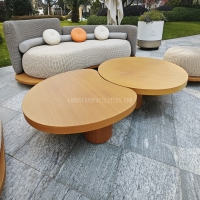Welcome to the website for landscape facilities products and knowledge.
How do landscape chairs incorporate designs that minimize the risk of splintering in wooden models?
Landscape chairs, especially wooden models, are crafted with careful attention to detail to minimize the risk of splintering—a common concern for outdoor furniture. Here’s how designers achieve this:
1. High-Quality Wood Selection: Dense, slow-growing hardwoods like teak, cedar, or eucalyptus are preferred for their natural resistance to cracking and splintering. These woods contain oils or resins that enhance durability.
2. Smooth Finishing Techniques: Chairs undergo rigorous sanding and sealing processes. Multiple layers of UV-resistant varnish or natural oil finishes protect the wood from moisture and wear, reducing splinter risks.
3. Rounded Edges and Contours: Sharp corners are eliminated in favor of rounded edges, which are less prone to chipping. Ergonomically shaped seats and armrests also distribute weight evenly, preventing stress points.
4. Seasoned and Treated Wood: Properly dried and treated lumber resists warping and splitting. Kiln-drying removes internal moisture, while pressure-treated wood resists rot and insect damage.
5. Reinforced Joints: Instead of nails or screws (which can loosen and expose rough edges), mortise-and-tenon or dowel joints are used for seamless, sturdy connections.
By combining these design elements, wooden landscape chairs remain splinter-free, ensuring long-lasting comfort and safety in outdoor settings.
Related search:

Recommendation
Elliptical metal outdoor table with nested design, resembling wood grain, round table